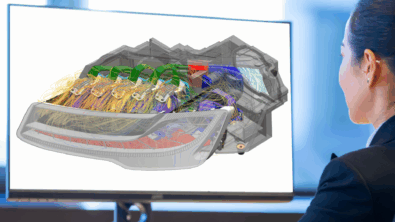Urban air mobility: Using simulation to define safety protocol for the city of the future
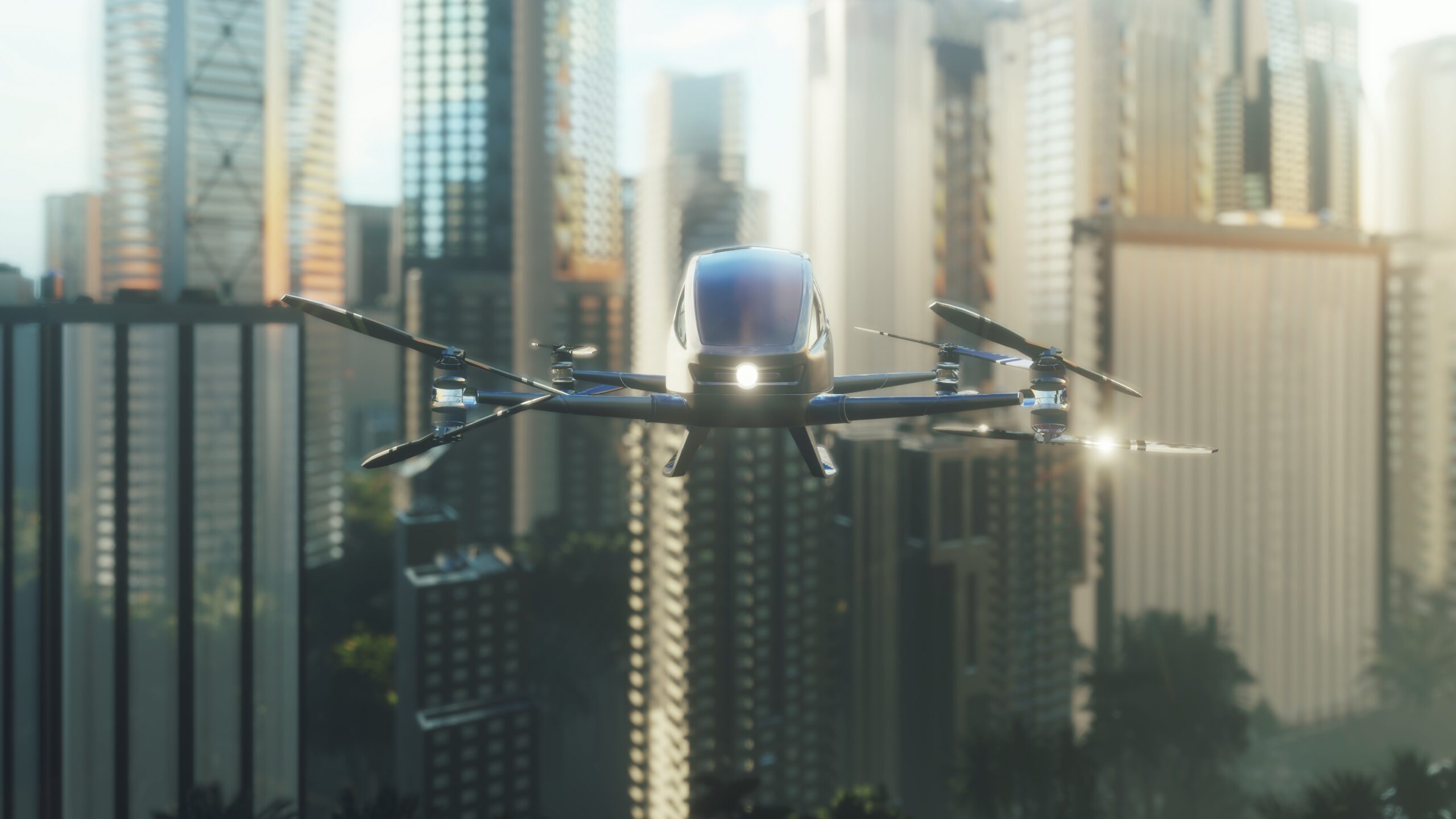
London. Bogota. New York City. Lagos. Mumbai. Sydney.
What is one thing all these major international cities have in common?
Road traffic.
Congested roads do more than waste commuter time. They hinder emergency first responders, increase the likelihood of car accidents, and reduce overall quality of life.
Urban Air Mobility (UAM) offers a promising solution to the world’s road traffic problem. In 2022, the European Union’s Horizon 2020 research and innovation programme granted funding for the Aurora (sAfe Urban aiR mObility for euRopeAn citizens) project. The goal: “Develop and integrate safety-critical technologies to support autonomous flight UAM in urban environments, focusing its demonstrations primarily on emergency-related applications.”
This project brought together 8 partners from 5 EU countries, all with expertise in aeronautics, smart city technologies, image processing, sensing and social science to foster adoption of UAM and ensure that it has a beneficial impact on people and society. Siemens Digital Industries Software was selected as one of these partners, alongside leading organizations such as SEAL Aeronautica, Ghent University, Thales Six GTS France, University of Pisa, Robodrone, and University of Florence.
The role of Siemens was to develop simulation models of the environment, the drone, and its sensors. Using Simcenter Amesim for the system simulation, Simcenter Prescan for modeling the environment, and NX to build the CAD models, Simcenter Engineering Services and the Simcenter product team worked with project partners to explore the use of drones for three hypothetical use cases:
- First responders: Search and rescue mission
- Urgent logistics: Delivering emergency goods
- Smart city: Energy management
In addition to exploring the feasibility and safety of UAM, these scenarios were designed to help the EU answer questions such as:
- Will UAM contribute to greenhouse gas emissions?
- Will it help decrease air pollution in cities?
- Will it contribute to noise pollution?
- Could it cause injuries?
- Would it really help relieve traffic congestion?
UAM use case 1: Search and rescue mission
Consider this scenario: A child has gone missing. He was last seen in Lužánky Park in Brno, Czech Republic. Covering an area of 22.3 hectares, Lužánky is the largest park in the city.
First responders have come up with a solution. Using a Robodrone Sparrow, they will be able to automatically search the park by air, saving valuable time.
However, during this search, the drone will face obstacles. In this simulation, the drone needs to avoid a search and rescue helicopter that is also searching the park. It will also need to land safely in case of an emergency or low battery.
Simcenter Engineering Services generated a model of the Robodrone Sparrow using NX.
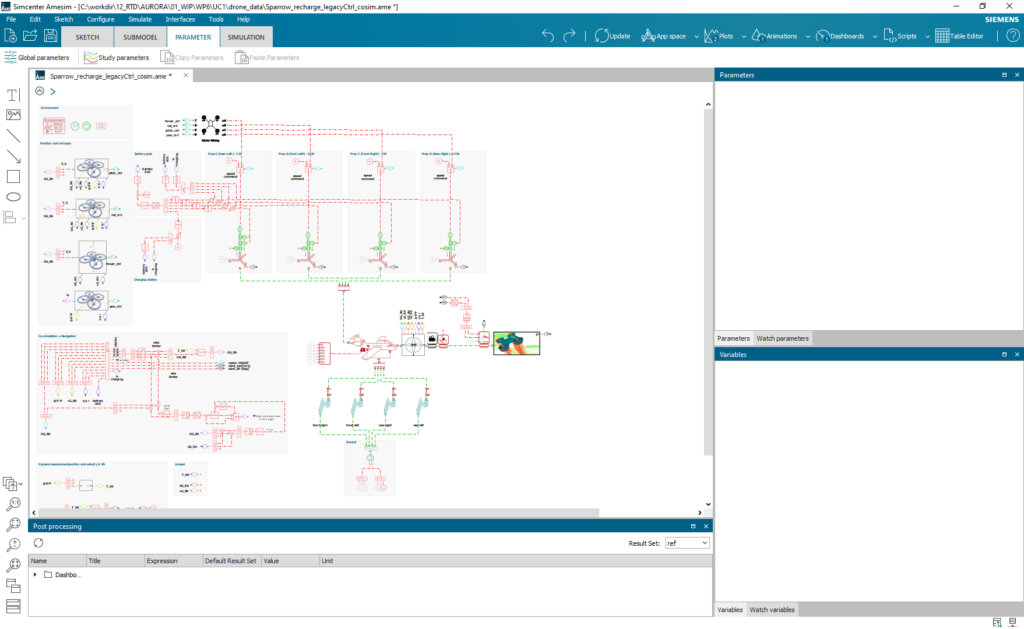
Simcenter Amesim enabled the Simcenter team to simulate all the dynamics of the drone, including motion, controls, and battery modeling.
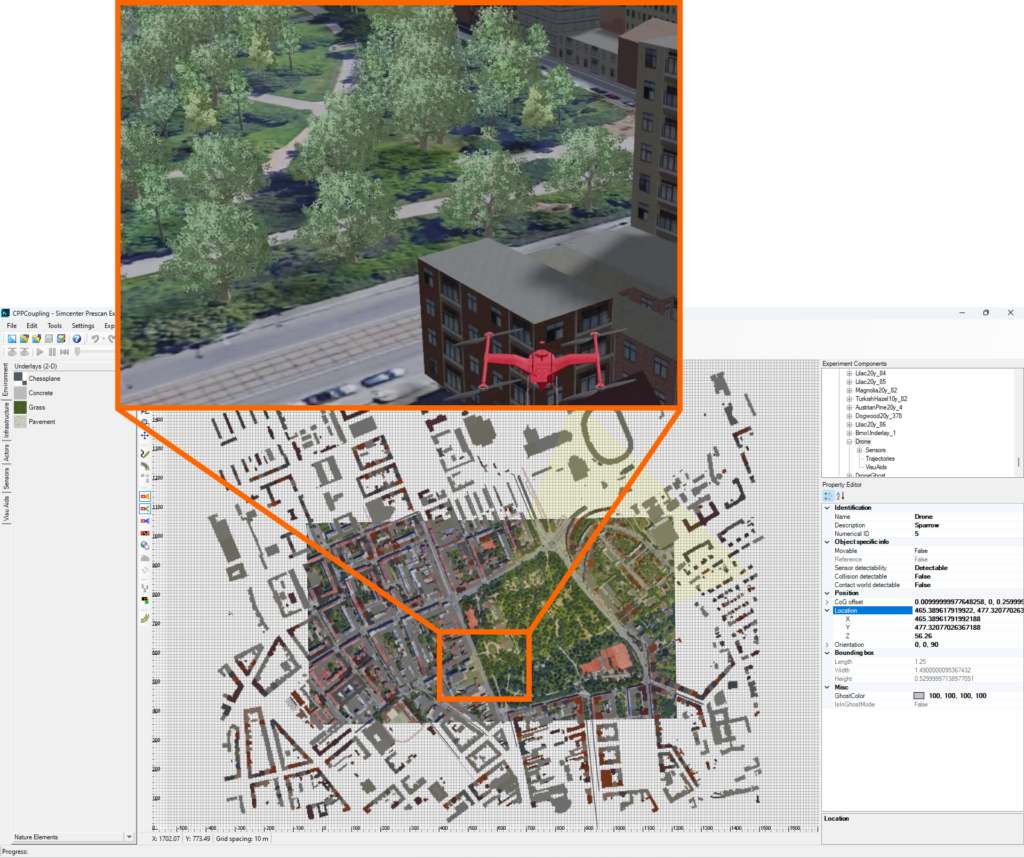
Using Simcenter Prescan, the Simcenter Engineering Services developed a highly detailed and accurate model of Lužánky Park, including trees, buildings, people, and other important details. The sensor modeling, including LiDAR, radar, and camera were also evaluated using Simcenter Prescan.
The safe landing detection algorithm was developed by Thales Six GTS France, who then transferred this technology block to the Simcenter Engineering Services team. The Simcenter team integrated it into the simulation framework to virtually test the landing in case of a low battery, ensuring that the landing would happen in a safe area and not on trees or any other objects.
Battery discharge was an important piece of this use case, as drone batteries currently do not last long. They can deplete quickly based on factors such as outside temperature, wind, internal drone temperature, and more. The ability to identify safe landing locations in case of empty battery or other emergencies, as well as accurate obstacle detection and avoidance, will contribute to the safe use of drones in urban areas and improve their usability in search and rescue missions.
UAM use case 2: Urgent logistics
A second application for UAM is urgent logistics, such as delivering medical supplies to hospitals. Imagine there is a hospital patient in Piombino, Italy, in urgent need of blood. The hospital with enough blood matching the patient’s blood type is in Portoferraio, Italy.
Separated by a stretch of water, the journey from Portoferraio to Piombino could take up to 1.5 hours by ferry. The hospital patient is deteriorating quickly and the blood will not arrive in time using traditional transportation methods.
A drone could be used to deliver blood much faster than by road. However, in its journey, the drone will face wind and it will need to avoid a particularly mountainous area near its destination.
Using NX, Simcenter Engineering Services imported a model of a DJI Matrice M300 drone carrying the package.
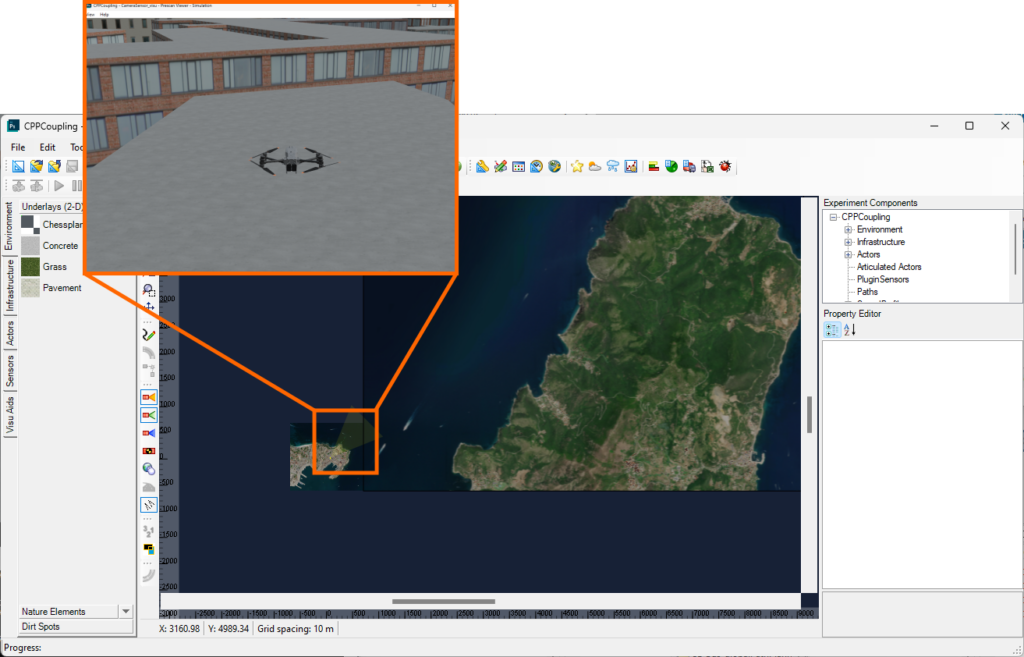
The Italian environment was modeled in Simcenter Prescan, while Simcenter Amesim gave insight into how wind and height would affect the drone’s battery capacity.
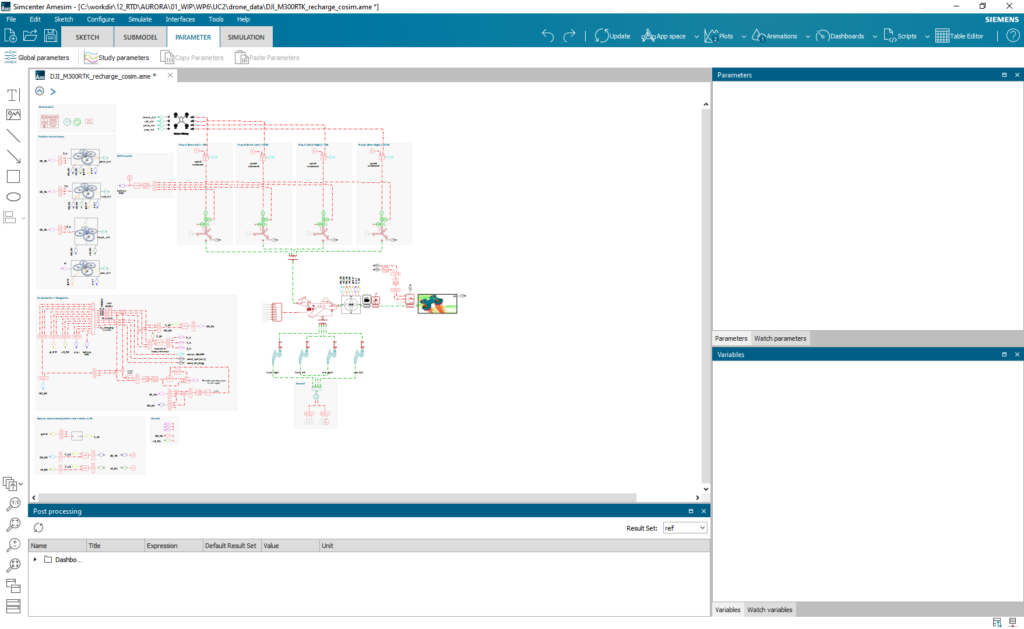
These simulations enabled the team to understand whether the drone could safely navigate the mountain & sea areas and how battery life would be affected by wind and other flying conditions.
UAM use case 3: Smart city
The final use case was designed to investigate one of the most pressing concerns about the use of drones: battery life. In this scenario, Simcenter Engineering Services built a virtual model of the city of Castelldefels, Spain. While the drone is flying along its designated path, its battery starts to deplete.
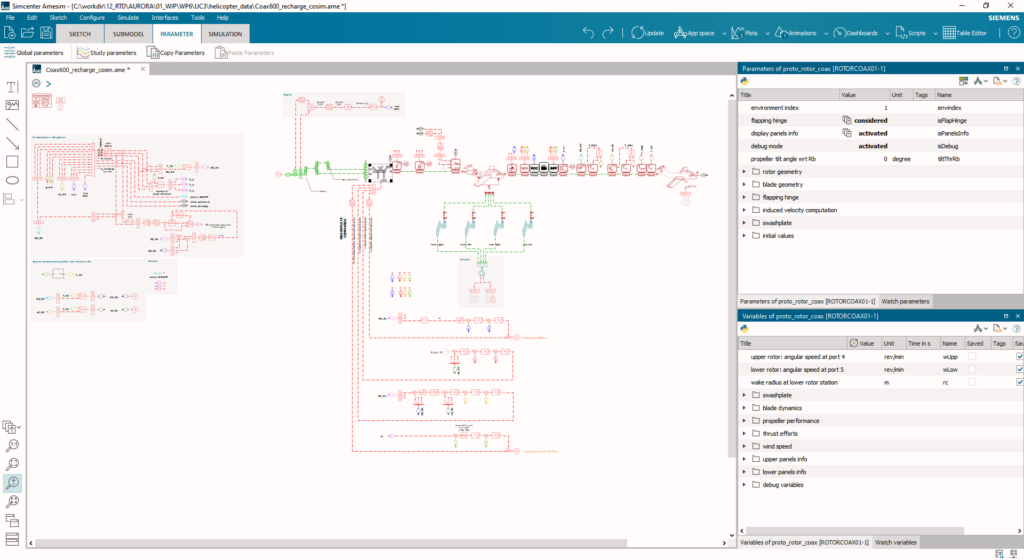
The drone needs to automatically connect to the server to find the closest charging station, dock itself, charge, and continue its journey. These controls were developed using Simcenter Amesim, while the environment and drone’s sensors were built using Simcenter Prescan.
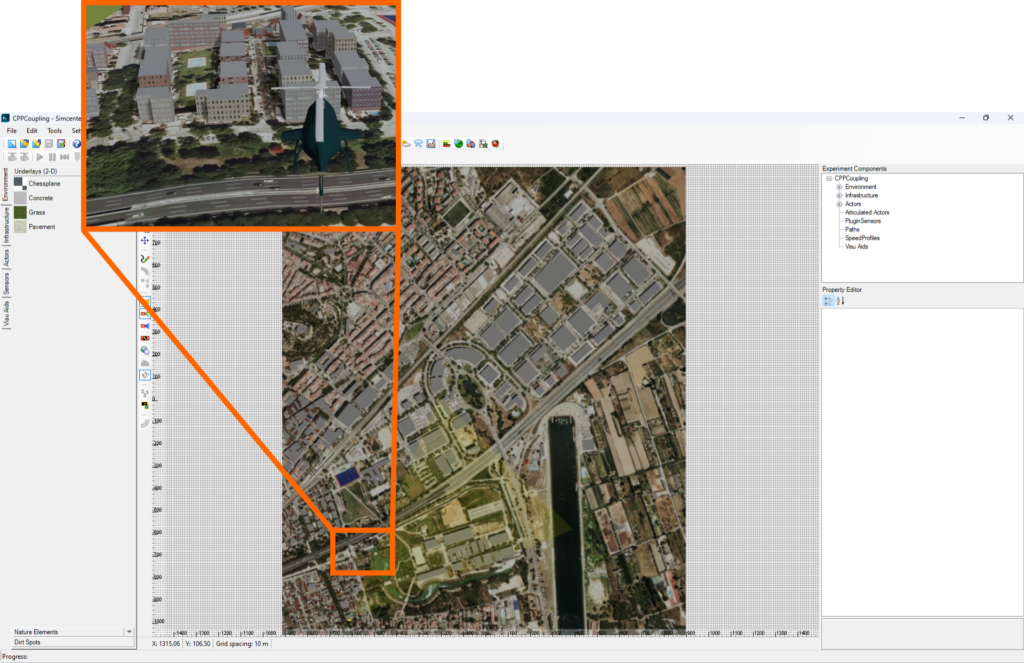
In order to expand the usability of this scenario, the Simcenter team developed simulations of both a Coax 600, an autonomous helicopter designed to carry people, and a Robodrone Sparrow to carry packages. This simulation helped the team understand whether a drone could safely locate the nearest charging station, dock itself, and return to its flight path after recharging.
Benefits of simulation for UAM
So, what was the point of building all these hypothetical scenarios in Simcenter?
Simulation enabled the team to test the drones under numerous flight conditions without building and destroying physical prototypes. In addition to saving a significant amount of time, this reduced costs and enabled the investigation of many more flight conditions than would have been possible with physical tests alone.
Additionally, simulation allowed critical safety conditions to be assessed. The design of the drone, its autonomous algorithms, and its battery can be changed to mitigate potential safety risks thanks to insights gained during the simulations.
The Simcenter portfolio was uniquely positioned to perform these simulations. The ability to integrate every aspect of drone performance in a single software suite, including sensors, system modeling, battery modeling, flight dynamics, propeller dynamics, environment modeling, and more, would not be possible with other solutions. Using one software provider, combined with the expertise of the Simcenter team, provided a crucial advantage, enabling the process to be streamlined and saving valuable time.
Flying into the future
The Aurora project will enable the EU to set guidelines for future verification and validation of UAM applications. It gave valuable insight into the current limitations, safety risks, and environmental risks of UAM.
While we may not see UAM technology in cities today, Siemens Digital Industries Software and the other Aurora project partners have paved the way for future generations to be able to benefit from this technology and live greener, safer, and less congested lives.

